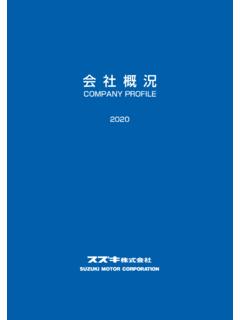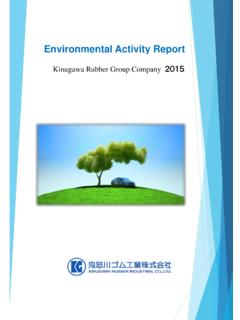Transcription of RECENT DEVELOPMENTS IN THE AUTOMOBILE …
1 Please cite this paper as: OECD 2011, RECENT DEVELOPMENTS in the AUTOMOBILE industry , OECD Economics Department Policy Notes, No. 7. Economics Department Organisation for Economic Co-operation and Development ECONOMICS DEPARTMENT POLICY NOTE No. 7 RECENT DEVELOPMENTS IN THE AUTOMOBILE INDUSTRY 1 RECENT DEVELOPMENTS in the AUTOMOBILE Industry The AUTOMOBILE industry plays an important role in overall business cycle DEVELOPMENTS . Although the industry accounts for only a small share of industrial output in most OECD economies (around 5 per cent in the median OECD economy), it is comparatively volatile and can thus, at times, make a large contribution to aggregate fluctuations in economy-wide activity.
2 And with the location of final assembly and motor parts production having become increasingly internationalised over time, disruptions to supply in one country, as in the aftermath of the earthquake and tsunami in Japan this March, can potentially have adverse near-term effects in others. This note takes stock of RECENT DEVELOPMENTS in global car production and sales and explores the extent to which they are contributing to the softening of global activity in the second quarter of A sharp downturn in motor vehicle and parts production accounts for a sizable proportion (well above the direct share of output in total production) of the observed slowing in the growth of economic activity since the early part of 2011.
3 The direct impact of the decline in vehicle and parts production in the second quarter is equivalent to a reduction in the annualised rate of GDP growth of 2 percentage points in Japan, around percentage point in China and between to percentage points in the United States, the United Kingdom and France. The main findings are the following: There are clear signs of global supply-chain effects, with production disruptions in Japan in the aftermath of the earthquake and tsunami having direct effects on production, sales and prices in other countries. In the major economies, the level of new car sales in April and May is estimated to have been 4 per cent below that in the previous two months. This points to some possible underlying weakness in car demand, and thereby private consumption, in the second quarter of this year, even allowing for the impact of shortages in availability and rising car prices due to supply-side disruptions and the effects from the phasing-out of earlier schemes to support car demand.
4 At current low levels, car sales are well-below estimated longer-term trend levels in many OECD economies, suggesting that scope remains for strong, pent-up demand for cars to emerge as the recovery progresses. Motor vehicle and parts production After declining sharply following the onset of the recession, car production has recovered gradually since the latter half of 2009, helped by considerable direct government support as well as the boost to demand provided by assorted temporary car scrapping schemes to encourage new sales. In the first quarter of 2011, car production in the United States and Germany was over 20% higher than a year earlier, with 1.
5 The note follows on from the earlier analysis of Haugh et al. (2010). 2 production in the United Kingdom and France having risen by 16% and 7%, respectively. This strong growth in production was an important contributor to the pick-up in GDP growth over the same period. In May 2011, when OECD Economic Outlook 89 was published, the global recovery was projected to gain further momentum only slowly, with the adverse supply-side shocks from high commodity prices and the earthquake and its aftermath in Japan expected to result in lower activity in the second quarter of 2011, including car production and sales. In particular, anecdotal evidence was already starting to appear that the supply-chain effects of the Japan earthquake could be larger than first assumed.
6 Subsequent evidence has revealed the sizable extent to which motor vehicle production in Japan and elsewhere has been adversely affected, and the large contribution this has made to the softer growth of industrial production in several economies (Figure 1): In Japan, the average level of passenger car production in March and April was 55% lower than in January and February, with production declining to a level last seen in early 2009. Production of motor parts declined by 40% in the same period. Together, the production shortfalls in these industries accounted for almost one-half of the large aggregate decline in Japanese industrial production in these months, as well as for a large proportion of the sharp drop in Japanese export volumes.
7 The subsequent bounce-back in production of passenger cars and parts in May represents around three-quarters of the aggregate rise in total industrial production that month. Assuming that production rises by a further 5 per cent in June (broadly in line with the Survey of Production Forecast), the decline in passenger car and motor parts production in the second quarter is directly equivalent to a decline in GDP of just under 2 percentage points at an annualised rate. In the United States, the production level of motor vehicles and parts in April and May was 5 per cent lower than in February and March, with the level of motor vehicles output declining by just over 7 per cent. In contrast, the level of non-motor vehicle industrial production was per cent higher in April and May than in the previous two months.
8 Assuming an unchanged level of vehicles and parts production in June, the lower level of vehicle and parts production in the second quarter is directly equivalent to a reduction in second quarter GDP growth of between percentage points at an annualised rate. In the major European economies, where monthly data on industrial production are less timely, information is available only for some countries up to May. A large drop in monthly production of motor vehicles (including trailers) has occurred in France and the United Kingdom (where Japanese car affiliates make up a large share of the industry). In contrast, provisional data for Germany show that after a small decline in April, there was a marked jump in motor vehicle production in May, taking the level of output well above the first quarter In China, production data from the China Association of AUTOMOBILE Manufacturers show that the number of cars produced in April and May was around 3% lower than a year earlier.
9 On a seasonally adjusted basis, the level of production in April and May is estimated to have been some 8 per cent weaker than the average in the first quarter of 2011. Assuming an unchanged Motor vehicle production remained well above the levels seen during the recession in all three economies. 2. In the United Kingdom, the average level of motor vehicle production in April and May was around 5 per cent lower than the average in the first quarter of 2011. In France, motor vehicle production in April was some 5% lower than the average level in the first quarter of 2011. Assuming unchanged vehicle production in May and/or June, the second quarter decline in vehicle production would be equivalent to a reduction of percentage points in GDP growth in France and a reduction of percentage points in UK GDP growth (at annualised rates).
10 3 level of production in June, the second quarter decline in production is equivalent to a reduction of around percentage point in the annualised rate of GDP growth in that global location of automotive production, including that by Japanese companies, has become increasingly dispersed in RECENT years. 4 By 2009, less than half of the passenger car production by the largest six Japanese producers was undertaken in Japan (Figure 2).5 The growth and changing location of foreign production thus means that a temporary supply-chain disruption from Japan could now have larger direct spillover effects in other countries than would have previously been the case. In the aftermath of the natural disasters in Japan, it is clear that this has been the case.

















